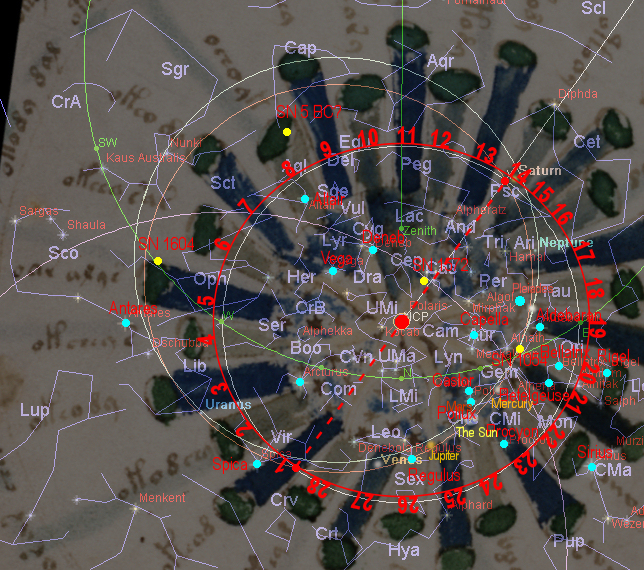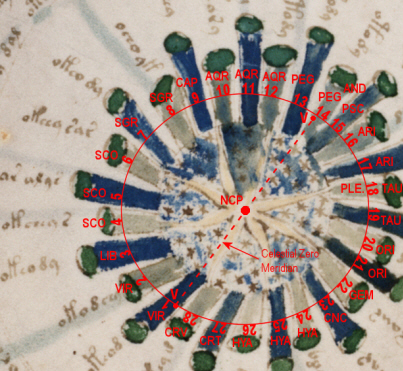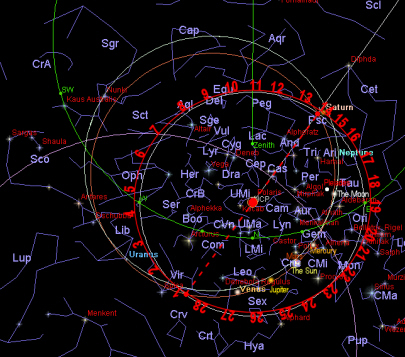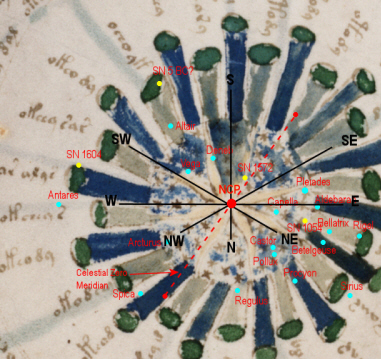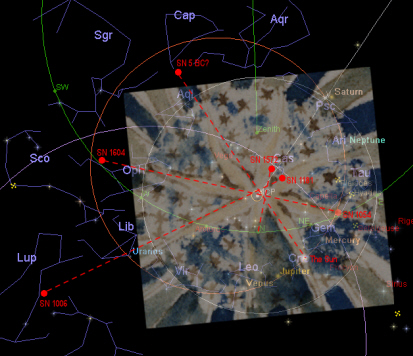|
|
| f69v, left, Voynich Manuscript. Credit: Beinecke Rare Book and Manuscript Library, Yale University. |
This folio shows a central star surrounded by 14 long and 14 short spokes, or 28 in total. This could refer to any number of things including days, months, sections of the sky, etc. Building on my interpretations of the other folios and the subject matter in general, I suggest this may be a North Pole centred map of the 28 lunar mansions. I have made various comparisons with this folio to an star map of 4th July 1054 AD as seen from North China (the date SN 1054 was first recorded by the Song Dynasty) and with details of the 28 Lunar Mansions as found on the Lopan by Dr. David B. Kelley. The central star has 8 points suggesting the image may be directional and this is compared also. The match is reasonably good apart from the area around Pegasus and Andromeda and if this is lined up correctly SN 1054 and other features move out of alignment. The results of these various comparisons are shown below, keeping the positions of Aries and SN 1054 in the same orientation as on the other folios. The first image is a combined image of all the factors the other images show various aspects of this more clearly.
|
|
| f69v, left, Voynich Manuscript. Credit: Beinecke Rare Book and Manuscript Library, Yale University/Credit: Redshift6. North Pole centred star map, 4/7/1054, North China. Overlay by P. Han indicating the 28 Lunar Mansions compared to the spokes on the folio keeping the positions of Aries and SN 1054 the same as suggested on other folios and in comparison with an actual star map of 4/7/1054, North China. SN 1054, SN 1572, SN 1604 and SN 5 BC? are indicated. Recognisable stars in the 28 Lunar Mansions are indicated for orientation. |
|
|
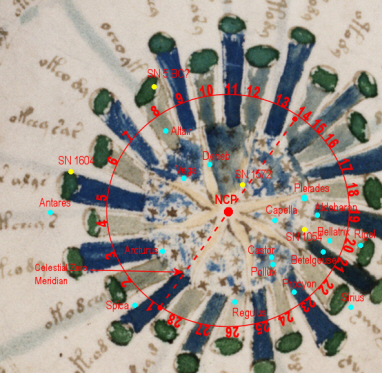 |
| f69v, left, cropped, Voynich Manuscript. Credit: Beinecke Rare Book and Manuscript Library, Yale University/Credit: Redshift6. North Pole centred star map, 4/7/1054, North China. Overlay by P. Han indicating the 28 Lunar Mansions compared to the spokes on the folio keeping the positions of Aries and SN 1054 the same as suggested on other folios. | f69v, left, cropped, Voynich Manuscript. Credit: Beinecke Rare Book and Manuscript Library, Yale University/Credit: Redshift6. North Pole centred star map, 4/7/1054, North China. Overlay by P. Han indicating the 28 Lunar Mansions, supernovae and recognisable stars in the 28 Lunar Mansions. |
|
|
|
| Credit: Redshift6. North Pole centred star map, 4/7/1054, North China. Overlay by P. Han comparing orientation of star map to the 28 Lunar Mansions | f69v, left, cropped, Voynich Manuscript. Credit: Beinecke Rare Book and Manuscript Library, Yale University. Overlay by P. Han showing supernovae and recognisable stars in the 28 Lunar Mansions and directions on 4/7/1054, North China of the constellations. |
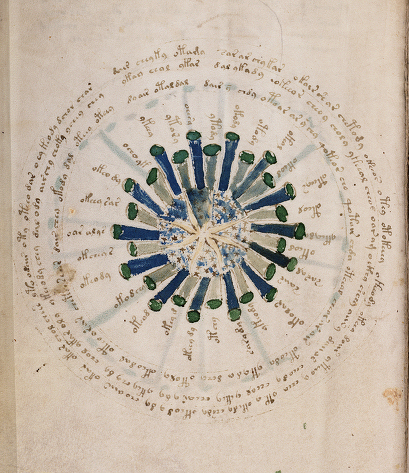 f
f